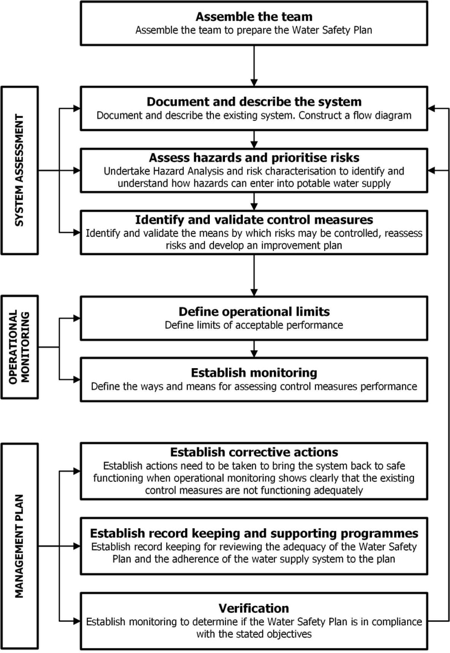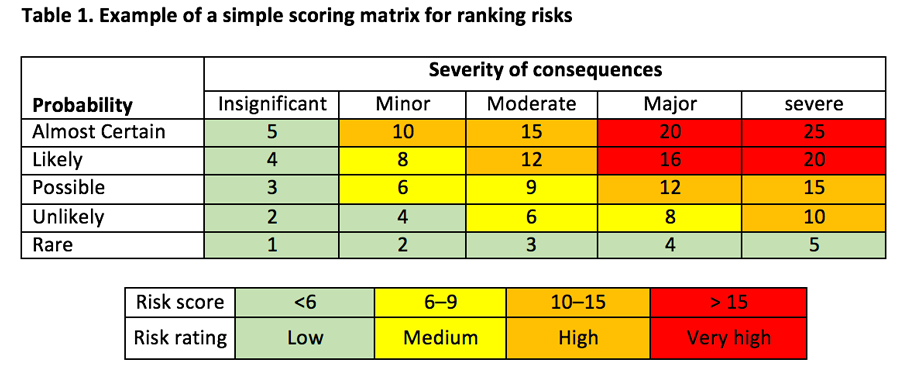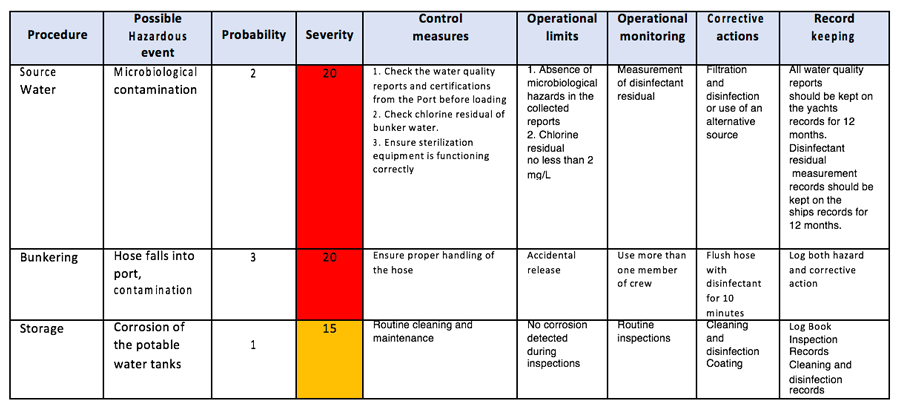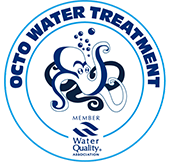We use cookies to make your experience better. To comply with the new e-Privacy directive, we need to ask for your consent to set the cookies. Learn more.

Water Safety Plan Application Manual
Water Safety Plan for yachts and marine vessels
In August 2013, the Maritime Labour Convention (MLC) started to enforce their regulations (MLC 2006), Annex 2 of these regulations, relate specifically to freshwater loading and fresh water produced on board, supply, disinfection and storage arrangements, distribution systems and maintenance, aimed at maintaining high-quality drinking water onboard ships, to protect all on- board from waterborne health risks.
Yachts and marine vessels must provide an adequate supply of safe water for drinking, washing, preparing food, supplying recreational water such as pools and spas, fire control, dishwashers, laundry, air conditioning, boilers, deck washing, toilets and refrigeration.
Drinking water (potable water) consumed by crew, owners and guests must be provided under good hygienic conditions. It should be of an appropriate quantity and of a quality that it will not cause immediate or long-term harm to people drinking, washing or using it.
It must be free from any microorganisms, parasites, chemicals or other substances which, in the numbers or concentrations present, constitute a risk to human health.
Waterborne disease outbreaks may occur on Yachts and marine vessels due to failures in water safety systems.
Water is usually sourced from potable supplies on shore or generated at sea from sea water. Ensuring safe bunkering of water is essential to reducing potential risks for those on-board.
Yachts and marine vessels must ensure that bunkered water is of potable quality, as well as ensure that the actual process of bunkering, distribution and storage of water within the vessel is safe, that the equipment used prevents chemical or microbial contamination, in line with the WHO and International Water Association (IWA) guidance, the systems and controls for the provision of safe water on Yachts and marine vessels should be included within an overall Water Safety Plan (World Health Organization, 2008).
The most effective means of consistently ensuring the safety of a potable water supply is through the use of a comprehensive risk assessment and risk management approach.
This encompasses all steps mentioned above, in the water supply from bunkering and making water on board to showering, drinking and using the water. In these Guidelines, such approaches are termed water safety plans (WSPs). WSPs represent an evolution of the concept of sanitary surveys and vulnerability assessments that include and encompass the whole of the water making, bunkering and supply system and its operation. The WSP approach draws on many of the principles and concepts from other risk management approaches, in particular the multiple-barrier approach, hazard assessment and critical control points (as used in the food industry).
WSPs vary in complexity, as appropriate for the situation. In many cases, they will be quite simple, focusing on the key hazards identified for the specific potable water supply system. The wide range of examples of control measures given in the following text does not imply that all of these are appropriate in all cases.
Aims of a WSP
The aim of the WSP is very simple, to ensure that the fresh water on board does not pose risks to health in either use or consumption, and is of sufficient quality to satisfy both those who use it and the requirements of the current rules, regulations and guidelines.
Benefits of a properly devised WSP include:
- demonstration of “due diligence”;
- improved compliance;rationalizing and documenting existing operational procedures, leading to gains in efficiency, improvement of performance and quicker response to incidents;
- Improving confidence in drinking system water and cutting down on bottled water.
- it ensures operational monitoring of control measures;
- improved management of existing crew knowledge.
- it assists competent authorities in conducting inspections.
Producing a WSP
The WHO Guide to Ship Sanitation advises that there are 3 components to a WSP:
- System Assessments (including a description of the supply system up to the point of consumption)
- Operational Monitoring (including identification and monitoring of the control measures applied on board the vessel)
- Management and communication (including verification and programs to manage people and processes).
It should be noted that the description of the water supply system may include reference to areas outside the control of the vessel (e.g. the supply of water to the port).
However the system assessment will need to identify hazards involved in taking water from such sources, evaluate the risks and determine the control methods required.
Producing a WSP will, in most cases be a team approach. The following figure from the European Manual for Hygiene Standards and Communicable Diseases Surveillance on Passenger
Ships demonstrates the key stages of the process:

The Key processes in developing a WSP
1. Assembling the persons responsible
The first step in formulating a Fresh Water Safety Plan, is to assemble those who will be responsible for creating, monitoring and implementing the plan.
The persons responsible for conducting the risk assessment should have the knowledge:
- to understand the source of hazards (physical, microbiological, chemical) and the reason for their presence;
- to recognize hazardous events on the vessels water systems;
- to characterize risks;
- to decide about control measures and corrective actions;
- to collect all the information needed to conduct the risk assessment;
- to interpret information collected to conduct the risk assessment.
The team leader/manager responsible for the WSP should:
- be a senior officer such as captain or first mate working on the ship;
- have the knowledge to ensure that the WSP is implemented effectively;
- understand the hazards and hazardous events;
- have knowledge of the structure and policy of the company;
- recognize non-conformities of the operational limits as set out in the WSP;be able to supervise and make sure that control measures and corrective actions are correctly implemented;
- recognize when revisions of the WSP are needed;
- communicate effectively with all crew involved in the water system operation.
The persons responsible for the every-day operation of the water systems should be able to:
- carry out the monitoring procedures, control measures and corrective actions;
- implement correctly the procedures described in the WSP;
- recognize non-conformities and the need to report them;
- maintain the records and documents.
Effective risk management requires the identification of potential hazards and hazardous events and an assessment of the level of risk presented by each. In this context:
- a hazard is a biological, chemical, physical or radiological agent that has the potential to cause harm;
- a hazardous event is an incident or situation that can lead
- to the presence of a hazard (what can happen and how); risk is the likelihood of identified hazards causing health risks or the potential for health risks in a specified time frame, including the magnitude of that health risk and/or the consequences.
2. System Assessment
System assessment is designed to determine whether the drinking-water supply chain (up to the point of consumption) including the sources of water, water bunkering and production, treatment, storage and distribution, can deliver water of a quality that meets identified requirements.
2.1 Document and assess the system
The assessment and evaluation of a drinking-water system are enhanced through an accurate system description, and should include a digital (where possible) plan of the vessels freshwater holding tanks and distribution systems (both hot and cold).
This should then be followed by a visual inspection to confirm any additional outlets or changes made since construction.
The system description should include all processes and components of the water systems from the source of water to the consumer.
The water processes and components that may result in direct human exposure (ingestion, contact, and inhalation) should be identified and described.
The data should then be compiled into a list to ascertain the exact number and nature of water outlets.
All connections to non-potable supplies such as black/ grey water treatment systems, air conditioning units etc. should also be noted.
2.2 Collecting and evaluating available data
Areas that should be taken into consideration as part of the assessment of the drinking- water system include all real or potential hazards and hazardous events associated with each step in the drinking-water system that could result in contamination or interruption of potable water on- board.
A structured approach is important to ensure that significant issues are not overlooked and that areas of greatest risk are identified.
The overall assessment of the drinking-water system should take into consideration any historical water quality data such as past analyses and system operational data, that may assist in understanding the drinking-water system performance both over time and for the future.
2.3 A detailed description of the water supply should include:
- Sufficient information to identify relevant types of hazards and controls;
- Regulatory water quality requirements;
- Chemicals or materials that are added to the water;
- List of all water outlets
Special consideration should be given to the following
- Type of hose used to bunker
- Age of bunker hose
- Sterilization frequency of bunker hose
- Storage of bunker hose
- Type of pre-tank filtration
- Frequency of filter change
- Frequency of filter housing sterilization
- Material of construction of fresh water storage tanks
- Types of water conditioning equipment (softeners, carbon media filters etc.)
- Type/s of fresh water sterilization equipment
- Service intervals of sterilization equipment
- Desalination systems
- Materials of construction of fresh water distribution system
- Point of use filters (POU)
- Frequency of POU filter change
- Frequency of faucet filter sterilization
- Frequency of showerhead sterilization
- Showerheads such as fixed rainfall types that cannot be easily sterilized
- Systems connected to the distribution system (ice makers, water coolers, coffee machines etc.)
- Systems that are to the distribution system that are not for potable water use (Black and grey water treatment systems, air conditioning systems, windscreen washers, fire systems, desalination fresh water flush systems etc.)
2.4 Identification of potentially hazardous events
Possible hazardous events should include at a minimum:
2.4.1 Contaminated water
- Contaminated water sources from: source
- bunkered water from a potable supply;
- sea water used to produce potable water on board.
2.4.2 Contamination filling during bunkering, production and treatment
- Water contaminated during bunkering by the filling hose, filling during bunkering, line, or shore side/barge or truck connections.
- Water contaminated with sea water due to a missing or malfunctioning conductivity meter or automatic dumping valve.
- Water pollution caused by chemicals used before and during the water production.
- Corrosive water due to failure of mineralization or pH adjustment.
2.4.3 Contamination during storage
- Contamination of or bacterial growth in potable water storage caused by:
- Failure to monitor sterilization residue
- Inadequate sterilization equipment our equipment service
- Sterilization equipment failure
- Ingress of foreign materials or other substances caused by improper design and construction of storage tanks;
- Sediment in storage tanks;
- Incorrect cleaning of tanks;
- Biofilm growth in storage tanks pipe work and fittings contributing to contamination with Legionella, Pseudomonas aeruginosa, Mycobacterium spp. and amoebae;
- Damaged or defective storage tanks or their linings;
- Ingress of foreign materials or other substances during maintenance or repair of storage tanks;
- Backflow (backpressure or backsiphonage);
- Cross connection with technical, black or grey water systems;
- Poor temperature control or inadequate disinfection;
- Presence of stagnant water for more than seven days;
- Poor hygiene in repair works allowing potential microbial contamination to enter the system;
- Deliberate attempts to contaminate water supplies.
2.4.1 Contamination through the distribution system
Contamination of potable water or microorganism growth in the distribution system in particular due to:
- backflow;
- poor design and construction of piping system components;
- existence of dead legs /blind lines in the distribution system;
- damaged pipes;
- chemical contamination through the use of the wrong distribution construction materials;
- contamination during maintenance or the repair of piping system;
- biofilm growth in pipe work and fittings contributing to contamination with Legionella, Pseudomonas aeruginosa, Mycobacterium spp. or amoebae;
- contamination due to stagnant water for example in infrequently used outlets (stagnant lines) or other part of the water system where water remains stagnant for more than seven days;
- poor hygiene in repair works allowing microbial contamination to enter the system;
- deliberate attempts to contaminate water;
- corrosion in the distribution system.
2.5 Prioritizing hazards for control
Once potential hazards and their sources have been identified, the risk associated with each hazard or hazardous event should be compared so that priorities for risk management can be established and documented. Although there are numerous contaminants that can compromise drinking-water quality, not every hazard or hazardous event will require the same degree of attention.
The risk associated with each hazard or hazardous event may be described by identifying the likelihood of occurrence (e.g. certain, possible, rare) and evaluating the severity of consequences if the hazard occurred (e.g. insignificant, major, severe). The aim should be to distinguish between important and less important hazards or hazardous events. The approach used typically involves a semi-quantitative matrix.
Simple scoring matrices often apply technical information from guidelines, scientific literature and industry practice with well-informed knowledge and experience of a water treatment specialist.
Scoring is specific for each system within the vessel, as each system is unique.
By using risk ranking, control measures can be prioritized in relation to their significance. A variety of semi-quantitative and qualitative approaches to ranking risk can be applied. An example of a semi-quantitative approach is given in Table 1.

An example of descriptors that can be used to rate the likelihood of occurrence and severity of consequences is given in Table 2. A “cut-off” point must be determined, above which all risks will require immediate attention. There is little value in expending large amounts of effort to consider very low risks.
Table 2. Examples of definitions of likelihood and severity categories that can be used in risk scoring
|
Item |
Rating |
Definition |
|
Likelihood Categories |
||
|
Almost Certain |
5 |
Once per day |
|
Likely |
4 |
Once per week |
|
Possible |
3 |
Once per month |
|
Unlikely |
2 |
Once per Year |
|
Rare |
1 |
Once every 5 years |
|
Severity Categories |
||
|
severe |
5 |
Possible health impact |
|
Major |
4 |
Regulatory impact |
|
Moderate |
3 |
Aesthetic impact |
|
Minor |
2 |
Compliance impact |
|
Insignificant |
1 |
No impact or not detectable |
2.6 Control measures
Suitable control measures must be identified to ensure the prevention of potable water contamination incidents. All control measures for significant hazards or hazardous event must be assessed and recorded. The measures should be indicated on the flow diagram/table corresponding to the possible hazardous events.
Control measures include water treatment procedures, routine monitoring and inspections, maintenance, repair or replacement of equipment, cross connection control, labelling of pipes and hoses and training of the crew, temperature controls and flushing of infrequently used equipment.
2.6.1 Definition of validation
Validation is an investigative activity to identify the effectiveness of control measures. It provides the evidence that elements of the WSP can effectively meet the water quality targets.
2.6.2 Water production and private water supplies
Potable water produced at sea using reverse osmosis plants are considered to be private water sources and should be controlled as such with appropriate monitoring and risk assessment.
2.6.3 Operational monitoring
Control measures must be monitored in order to spot any deviations from the operational limits. Operational monitoring should include measurement of selected water parameters, and the equipment and construction inspection procedures.
Operational monitoring must provide early warning of failure of the on-board sterilization system or any other operational limit violations to enable effective water system management. In most cases, operational monitoring involves basic weekly water quality tests (pH, sterilization residuals, mean distribution water temperature and TDS) and routine hygienic inspections.
An operational monitoring plan should be put in place and include the following basic elements:
- define the sampling points and frequency of sampling;
- list the equipment required for monitoring water systems;
- establish the monitoring equipment standards (calibration, certification);
- ensure compliance with standard methods of water examination;
- define the locations to be inspected and frequency of inspections;
- define the required qualifications of crew carrying out the monitoring.
2.7 Operational Limits
Auditing the performance of control measures requires setting of operational limits for each one. An operational limit is a criterion which indicates whether the control measure is functioning as designed.
Operational limits might be either the upper limits or lower limits of the parameter values (such as pH, Sterilization residual, temperature, TDS) or visual factors.
2.8 Water Analysis
Regular analysis is an important factor in the WSP, the more often it is performed, the higher the chance of finding any problems at an early stage and the higher the chances of fast, successful remedial action. Regular testing has been shown as a high value, preventative maintenance tool for any WSP, reducing costly down time, charter loss and ensuring the confidence and safety of the drinking water on-board.
3.0 Corrective actions
Corrective actions are to be taken when the results of monitoring at a control point indicate a loss of control and may include repair or replacement of equipment, Hypo-chlorination, shock dosing with HydrasilAg+, flushing and dumping and then re-bunkering or reloading, etc.
Corrective actions should include the following steps:
- ensure water safety until correction;
- correct problem;
- identify cause of problem;
- take steps to ensure that the problem will not re-occur;
- evaluate if the lessons learned should be communicated to other yachts.
3.1 Record keeping
The documents required include the following:
- requirements for general system documentation (water Safety Plan manual, periodical maintenance system,
- routines for handling of deviations/corrective actions, emergency preparedness, etc.),
- details on HACCP,
- requirements for auditing and revising the general system documentation and the Water Safety
- Plan,
- system assessment and supporting information, description of the system and flow diagram
- WSP team formation,
- the operational monitoring programmes and results,
- the parameters measured and operational limits,
- water treatment methods used,
- outcomes of inspections,
- outcomes of audits,
- outcomes of adverse incidents.
3.2 Supporting programmes
Supporting programs may include the following:
- standard operating procedures for hygienic working practices;
- quality assurance/quality control programme for chemicals and materials;
- calibration and preventive maintenance programme for equipment used for monitoring the main control measures;
- crew members training to ensure they are skilled to do their jobs and understand the risks associated with water quality;
- regulatory issues related to water quality.
3.3 Audit
Regular audit of record keeping activities and other activities should take place at main control measures, including test results, data analysis.
Auditing includes;
a) checks of the records of the corrective actions taken in response to main non-conformances at the main control measures and
b) audit of practices to check that they are being used including taking corrective actions in case of non-conformance. Responsible person for regular audit is the team leader.
Periodic audit should be conducted:
- at intervals (e.g. once every 3 months);
- following substantial changes to the source, the distribution or storage system or treatment process;
- following significant incidents.
- Following poor analysis results
Periodic audit should include the following, in addition to review of the WSP:
- examination of the records to ensure that system management is being carried out as described in the WSP;
- ensuring that operational limits are kept within specification and that compliance is being maintained;
- ensuring that verification programmes are operated (check logs for water sampling results, weekly test results, maintenance — ensure that corrective actions have been taken after positive microbiological test results);
- assessment of implementation programmes and development of strategies for improvement and updating the WSP; and
- in some circumstances, sanitary inspection, which may cover the whole of the water- supply system including sources, production plans, treatment stations, storage tanks, and distribution systems;
- regular monitoring for infrequently used cabins, outlets, equipment etc.;
- weekly review of stagnant lines and updating of the list of taps, showers or outlets requiring regular flushing;
- identification of new chemicals added to the water.
- Non-conformities should be recorded by the persons responsible for the operational monitoring and be reported to the captain or team leader on board the yacht.
3.0 Verification monitoring
In order to provide a final assurance that the water supply system is operating safely, verification monitoring should be established. This includes:
- water quality monitoring (regular analysis of chemical and microbiological quality e.g. Total Coliforms, Escherichia Coli, Enterococci, Pseudomonas aeruginosa, Legionella pneumophila and HPC (Viable Bacteria) along with Mineral and Corrosion parameters),
- audit of operational activities,
- consumer satisfaction,
- validation of system capacity.
This is an incomplete example of a WSP for illustration only.

Reference list
World Health Organization. (2011). Guidelines for drinking-water quality. 4th edition. World Health Organization. (2009). Water safety plan manual (WSP manual)
Step-by-step risk management for drinking-water suppliers
EU SHIPSAN ACT / SHIPSAN TRAINET (2015). European Manual for Hygiene Standards and Communicable Disease Surveillance on Passenger Ships.
OCTO MARINE SERVICES
Everyone wants to know that their tap water is safe to drink, however, risk will always be present in a complex system such as those on a yacht.
Through sound management, risk can be controlled and reduced so that crew, owners and guests can drink their tap water with confidence.
Octo Marine is a leading water treatment specialist for the marine industry, established in 2000, we have been providing expertise, equipment, guidance, knowledge and services for over 18 years.
We are here to help our clients create and execute a Water Safety Plan, for both compliance and safety on-board.
We also offer ship sanitation compliant water analysis, with a full report, and have a vast range of testing equipment for use on-board.
Octo Marine supplies, designs, and builds all types of water treatment equipment for potable water, and we are always there to advise on the best options for our clients.

| Manufacturer | Octo Marine |
|---|---|
| Compatible | Octo Marine |





